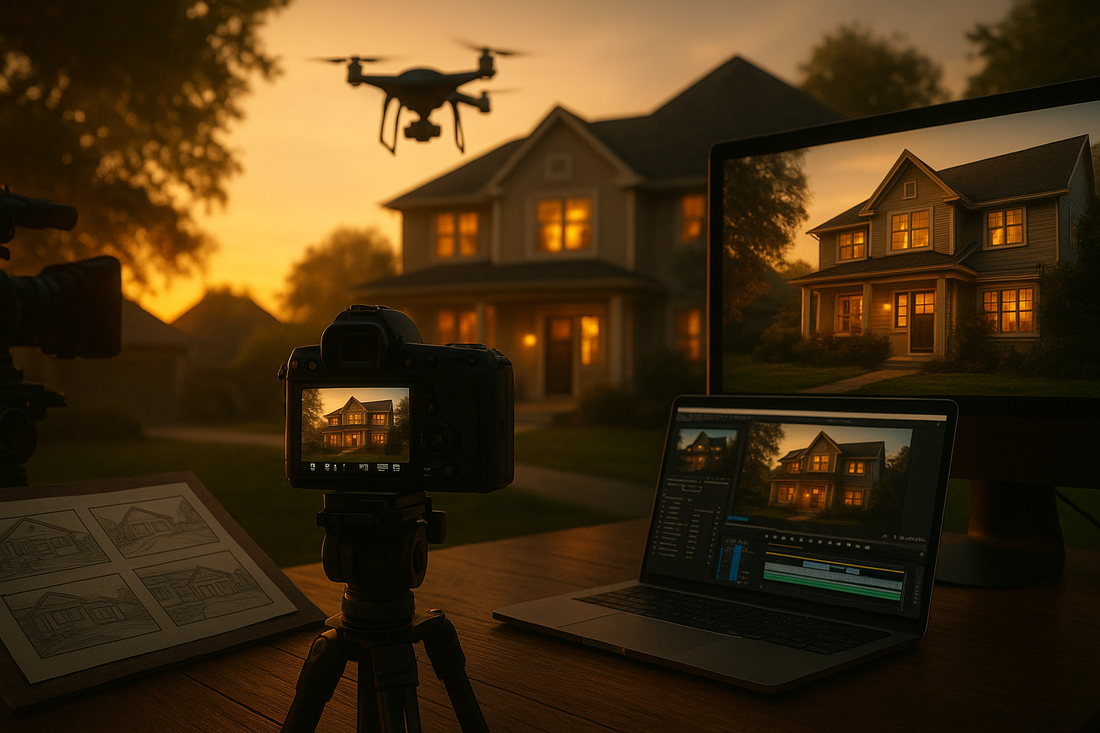
Immersive Storytelling: Selling Homes Through Visual Narratives
Share
In real estate, selling a home is never just about walls, square footage, or amenities—it’s about creating a vision of life within that space. Today’s buyers don’t just want to see a property; they want to experience it. This is where immersive storytelling through visual narratives has become a game-changing approach in real estate marketing. By combining photography, video, 3D walkthroughs, and digital staging, agents can craft compelling stories that connect emotionally with buyers and accelerate the sales process.
What Is Immersive Storytelling in Real Estate?
Immersive storytelling is the art of presenting a property as more than a structure. It’s about crafting a narrative that allows buyers to imagine themselves living, entertaining, and thriving in that space. Through visual elements and interactive media, agents guide buyers on a journey: from the first exterior view to exploring cozy interiors and envisioning lifestyle possibilities.
Unlike traditional listings that rely on static images or descriptions, immersive storytelling turns a home into an experience, creating an emotional connection that drives decisions.
Why Visual Narratives Work
1. Emotional Engagement
Buying a home is as much an emotional decision as it is a financial one. When buyers see a well-lit kitchen with sunlight streaming in, a cozy living room, or a serene backyard garden through cinematic video or digital staging, they begin to imagine life in the space. This emotional engagement increases interest and accelerates offers.
2. Enhanced Perception of Value
A home that is presented through a thoughtful narrative feels curated and desirable. Professional visuals, combined with digital storytelling, elevate the perceived value of the property, helping sellers achieve higher asking prices.
3. Stand Out in a Competitive Market
In markets flooded with listings, visual storytelling makes a property memorable. Eye-catching media—videos, drone shots, and 3D walkthroughs—capture attention and encourage buyers to spend more time exploring the listing, increasing the likelihood of inquiries.
Key Elements of Effective Visual Storytelling
Professional Photography
High-quality images remain the cornerstone of visual storytelling. Wide-angle shots, proper lighting, and staged interiors highlight the home’s best features and set the scene for the narrative.
Cinematic Video Tours
Video allows agents to control pacing, focus on details, and incorporate music or narration to guide viewers. A video tour can simulate the experience of walking through the home, helping buyers feel connected before visiting in person.
Virtual and 3D Tours
Interactive tours provide a sense of presence. Buyers can navigate rooms at their own pace, examining details, layout, and flow. This autonomy enhances engagement and helps buyers form a deeper connection.
Digital Staging
Empty or outdated spaces can feel impersonal. Virtual staging transforms rooms into inviting environments, showing potential lifestyles without the cost and waste of traditional staging.
Drone Footage
Aerial shots add context and perspective, showcasing outdoor spaces, neighborhood amenities, and property scale. These visuals enhance the story by situating the home in its environment.
How Agents Leverage Storytelling to Sell
-
Craft a Narrative Arc
Successful listings guide buyers from the exterior first impression to exploring interior spaces and highlighting lifestyle features. The story should evoke feelings of comfort, luxury, or aspiration. -
Highlight Lifestyle, Not Just Features
Focus on how the property complements life: family gatherings in a spacious living room, relaxing evenings on a balcony, or hosting friends in an open-concept kitchen. Lifestyle-focused storytelling resonates more than listing dimensions or material specifications. -
Integrate Across Digital Channels
Sharing visual narratives on social media, websites, and email campaigns amplifies reach. Each platform can leverage the story differently—short video clips on Instagram, detailed walkthroughs on the website, and immersive tours via email links.
The Impact of Immersive Storytelling
Properties marketed with visual narratives tend to attract:
-
Higher engagement online, with longer listing views and increased click-through rates.
-
Qualified buyers, as the immersive experience allows them to self-select based on genuine interest.
-
Faster sales, as emotional connection accelerates decision-making and encourages quicker offers.
Sellers also benefit by seeing their properties presented in a professional, compelling manner, enhancing confidence and satisfaction with the sales process.
Future Trends
Immersive storytelling in real estate will continue to evolve with technology. Virtual reality (VR) and augmented reality (AR) will allow buyers to explore properties in 3D and customize spaces in real time. AI-powered tools may even personalize visual narratives based on buyer preferences, creating a truly bespoke experience.
The future is clear: properties that tell a story will outperform those that simply list facts.
Final Thoughts
Immersive storytelling is more than a marketing tactic—it’s a transformative way to connect buyers to homes. By leveraging high-quality photography, video, virtual tours, and digital staging, agents create visual narratives that evoke emotion, highlight lifestyle, and accelerate sales.
In an era where first impressions are digital and buyers crave experiences, agents who embrace immersive storytelling will not only capture attention but also inspire action, turning listings into homes that buyers can see themselves living in.
